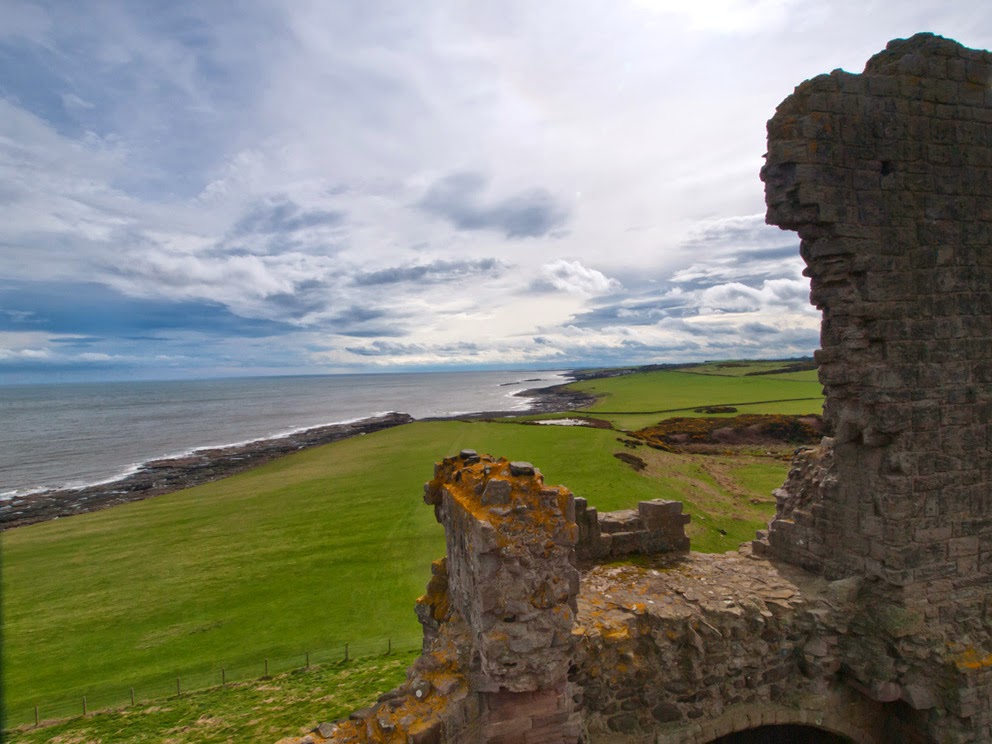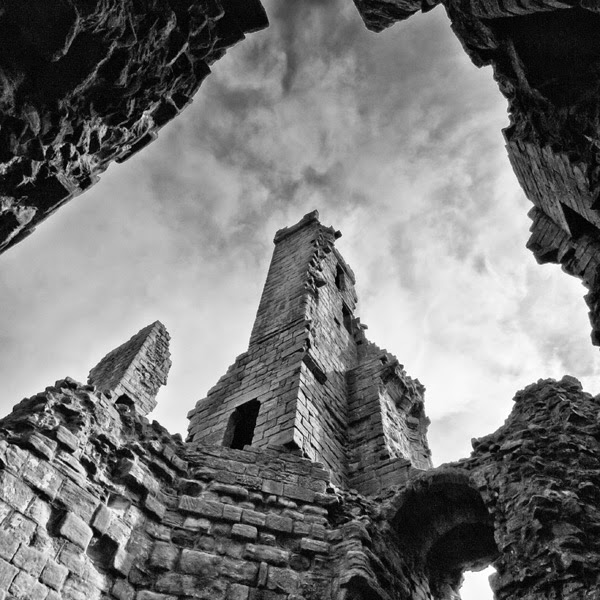The building of
Dunstanburgh
Castle began in 1313 when
Thomas, the Earl of Lancaster, nephew of King Edward II.
However Thomas never got to see the castle
complete as he was executed in 1322 for his revolt, and defeat, at the battle
of Boroughbridge.
The site of the castle
provides excellent protection with its sheer cliff face on one side and the
stormy
North sea on the other. The site
covered almost 11 acres and was, at that time, the largest castle in
Northumberland.
An outstanding feature
of the castle is its imposing Gatehouse of which the ruin still stands proud
and tall.
In 1362, John of Gaunt, fourth son of Edward III, inherited
the castle and had the gatehouse converted into a keep. His son, Henry of Bolingbroke, inherited the
castle in 1399 and subsequently usurped the throne as Henry IV. Dunstanburgh became a royal castle and a
Lancastrian stronghold during the War of the Roses. Its Lancastrian commander was Sir Ralph
Percy.
A castle as imposing as this has a history of
hauntings. One spirit that supposedly
walks the grounds is that of Thomas, the first Earl. It is said his beheading in Pontefract took
11 blows of the axe and his headless ghost wanders near to Lilburn Tower
with the head tucked under its arm and a look of agony on its face.


Lilburn
Tower is sometimes referred
to as Queen Margaret’s Tower after Margaret of Anjou, wife of Henry VI. She supposedly haunts the tower weeping for
her soldiers defeated at the battle of Hexham and calling the name
‘Henry’. This may be her husband who
died in the Tower
Of London in 1471 or her
trusted friend, Henry Beaufort, Duke of Somerset, who was captured at the
battle of Hexham and executed in the town square. Another ghost was a Danish prince who fell in
love with the Lord of the Castle’s daughter.
She was forbidden to marry him and one stormy night when he was riding
to the castle he was set upon by her brothers and killed. She was so distraught she threw her self from
the ramparts to her death in the sea. If
you are lucky, or unlucky, on a stormy night you may catch a glimpse of a rider
on a black horse riding furiously to the castle looking for his love. If you visit the Gatehouse, watch out
underfoot for toads, as they do love the wet slime on the walls and floor.





















